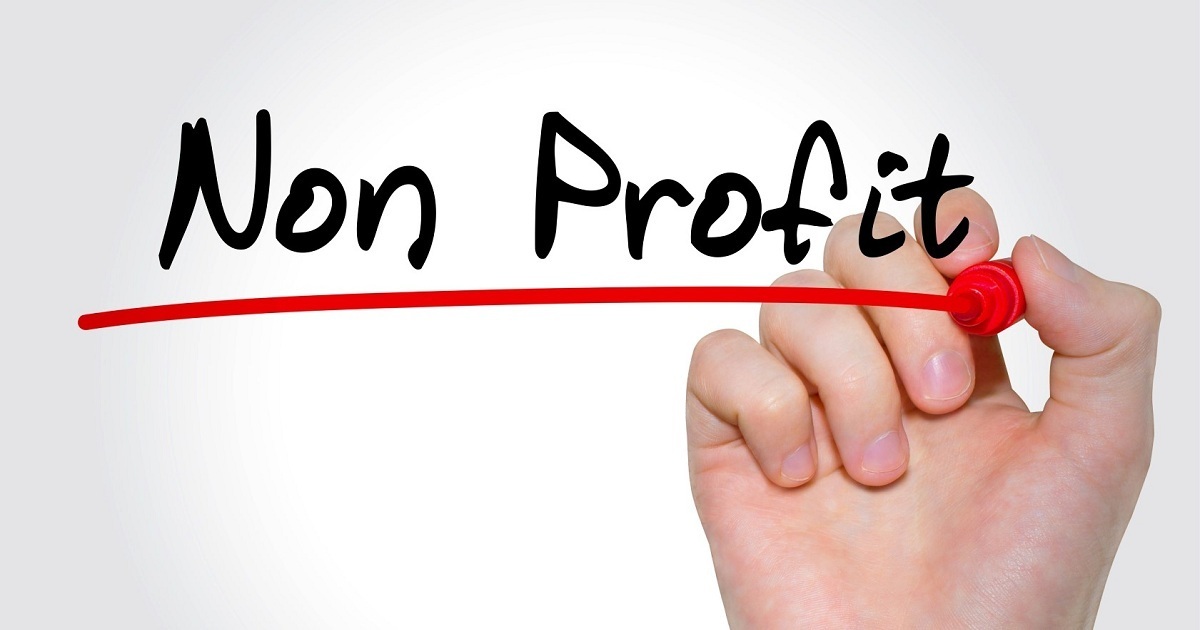
Nonprofit Management
Article | July 11, 2022
With more than 33 years working in, or for, the nonprofit sector, I've learned a lot of things about being an executive director or CEO of a nonprofit organization. I wish someone had been around to tell me beforehand what I should know, but unfortunately, like many E.D.'s I was originally thrust into the mix without a clue. So, for your benefit, here are the top 10 things I wish I knew before I joined a nonprofit board. Perhaps they will help you to serve better on the right board or to prevent you from serving on the wrong board for your specific background, talents and temperament.
1. The Board, Not the CEO, is Accountable
Board members need to understand that it is not the CEO but the Board that is in the box at the top of the organizational chart. Being in that top box means accountability for everything that happens in the organization. The buck doesn’t stop with the CEO but with the board.
I’ve seen this: For several years, an organization covered expenses by spending down every penny of a $1.5 million endowment. Every year, their board of high-powered business people approved a budget that actually planned for income from bequests, as if they could predict when their donors might die. When things finally came to a head, the board’s response was to ask the ED, “Well what are you going to do about this?” It never occurred to them that THEY had been accountable for the mess all along!
The board, corporately, is ultimately accountable when things go right, and when things go wrong, and it needs to know how to put that accountability into practice.
2. A Board Should Never Micromanage
Some boards see micromanagement as the road to accountability. Some see it as a detriment, but still can’t seem to stop. Either way, if your board is micromanaging, they are on the road to failure.
I’ve seen this: An organization had come through a time of financial hardship. They had eliminated their debt and were now operating from a position of fiscal strength. The board, however, was still in hardship mode, scrutinizing every purchase, no matter how small. They took 10 minutes at a board meeting to “investigate” why the staff went to one store vs. another, where they could have saved (I’m not kidding) $20 on a $200 item. The staff knew that every move they made would be second-guessed, and eventually they became immobilized. The board saw this as further proof of the need for scrutiny, and that cycle eventually crippled the organization.
Micromanagement is the opposite of accountability. True accountability is proactive and preventative, while micromanagement is reactive and fear-based.
3. My Involvement Will Not Fix a Dysfunctional Board
Sometimes our ego gets in the way, and we think that our involvement with a board will finally fix whatever problems the board has been having. From poor attendance to bickering and feuds, to the countless other issues boards face, my personality and skills alone will never solve these problems. It will simply bring one more person into the morass, to endure and potentially exacerbate those problems.
I’ve seen this: Board members in a rural area often drove for as much as an hour to get to board meetings, only to find there was no quorum. Frustrated, they instituted policies for removing board members who failed to attend meetings, only to lose those board members entirely. The reason? Aside from reviewing reports, the board did virtually nothing of significance for the organization. Once the board refocused its purpose (and then refocused its meetings!), attendance was almost always 100%. And new board members could be assured that board meetings wouldn’t waste their time.
4. My Time on the Board Does Not Equal Money
Every board should have a policy requiring board members to donate to the organization to the best of their means. This is NOT a fundraising issue. This is a living-by-example issue. If the board doesn’t believe the organization is worth investing in, why should a donor? How can we ask others to give generously when we haven’t done so ourselves?
I’ve seen this: Some of the board seats of an organization serving low income families are reserved for recipients of the service. As a condition of a large gift, a donor wanted to be assured the board had all donated as well. When the “client” board members were asked, “What amount could you give - even if it’s just 25¢?” they all gave. One client wept as she handed over a $1 bill. “This is an honor. No one has ever asked me to participate in this way before,” she said. However, some of the non-client board members became angry, saying they were never told they would have to donate their time AND their money.
With a giving policy in place, prospective board members will know what is expected of them BEFORE they join the board, and before a donor puts them on the spot by asking, “Has all your board given to the organization?”
5. The Board/CEO Relationship is Crucial for Success
If the board’s relationship with the ED isn’t great (or it stinks), or there are hard feelings between the board and staff overall, this will carry into every decision made by the organization. The Board/CEO relationship is like a marriage. It requires work! It also requires a great deal of trust and communication. Without these two ingredients, the organization is likely to ultimately fail.
I've seen this: An ED spent 20 years growing an organization to a nationally recognized and widely copied model for providing service. The board began attracting heavy-hitters, many of whom joined for the status of affiliating with this group, but who felt little passion for the mission. A rift was created between the board, who was mostly concerned about the organization’s finances (which were, by the way, in great shape), and the staff, who were mostly concerned about meeting the community need (for which they continued to maintain a stellar reputation). After a few years of this battle, the ED retired early. It has now been 2 years, and the board is still arguing over what they are looking for in a replacement ED.
Problems between the staff and the board are almost always symptoms of something larger - usually a lack of understanding / focus on the organization’s vision or its values system. It is important that a board with these kind of issues receive some kind of “marriage counseling.”
6. The CEO Should Not Be the Only One Recruiting Board Members
If the nonprofit CEO is the one doing most (or all) of your board recruitment, I probably don’t want to join the board. Look at the organizational chart. Do you really want your CEO hand-picking his/her boss?
I’ve seen this: A CEO did all the recruiting. She also determined what would be on the board’s agenda every month, and provided the board with the information she felt they should have. Not surprisingly, the board never did anything but rubber stamp what the CEO suggested. In this organization, the board really thought they worked for the CEO!
If the CEO is your board’s main recruiter, then your board likely has far more problems than you might suspect.
7. Planning and Implementing are Two Different Things: Both are Needed
An organization needs plans for how it will impact the community and plans for how it will ensure it has the capacity to create that impact. If the board has plans, but no clue about the status of those plans, that’s just as bad. An organization's plans are your answer to the big questions - Why are we here? What are we trying to accomplish for the community? If the board can’t answer those basic questions, then what exactly is the board doing?
I’ve seen this: An organization was required to have a strategic plan for accreditation. Every year they hired a consultant, created a plan, and did nothing to implement it. When they called to ask us to facilitate their next planning session, we told them we couldn’t do a plan unless we were assured the board would monitor its implementation. And they had no idea what we meant.
A board needs to understand that “ensuring that the organization is making the community a better place” is one of their primary areas of accountability.
8. The Bylaws Determine How (And If) the Board Works
Does the board have term limits, or can someone be on the board forever? Is it clear what types of actions could get someone thrown off the board, and what the process would be for removing them? Policies and procedures will guide board decisions and expectations.
I’ve seen this: A board president called for advice: One of his board members had embezzled from their small nonprofit, but the rest of the board wouldn’t vote to remove him from the board. After I picked myself off the floor, I asked if they had contacted the police or an attorney, as this was a legal issue first, and only then a policy issue. Yes, he said, he knew they needed an attorney, but right now he needed to convince the rest of the board to remove this guy. Without a policy, the rest of the board felt sorry for the embezzler and wouldn’t vote to remove him. So there he stayed, attending meetings and voting on organizational matters, months after the discovery had been made! As extreme as it appears to be, with no policies in place, the board was in a quandary about whether or not to remove their “friend.”
If you are thinking this couldn’t happen to your board, you might be surprised at some of the bad behavior I have witnessed from otherwise rational people - behavior that seems to only show itself when they find themselves on a nonprofit board. Without consistently applied board policies and procedures, it is more likely that your own odd sets of circumstances could knock your board (and your organization) for a loop.
9. Someone Has to Provide Me Training and Orientation
The board must have an orientation program, and new board members need more than their board manual and perhaps a tour of the facility. Without training, how will I know what is expected of me? And how will the organization be assured that I am capable of guiding the organization?
I’ve seen this: I once gave a long-standing board a quiz about their organization, with easy questions like “What is your annual budget?” and “Name three programs the organization provides” and “Name one staff person aside from the administrative staff, and tell what their position is.” They all failed. Many had been on the board for 20 years, and each and every one of them failed the quiz. How could they govern if they didn’t have such basic information? Often, I perform this same quiz about the organization's mission ("Tell me the mission statement of the organization") and 99% of the time, they also fail.
Board members must be well informed about the organization from the moment they are permitted to vote, because otherwise they won’t be able to do the job. At the very least, they should be able to recite the mission statement! The organization must also ensure that every single board member understands how to read the financials (not just those on the finance committee), so that every board member can be accountable for decisions that require financial understanding (like approving the budget, approving new staff positions, etc.).
10. Why Do You Want Me, Anyway?!
This will sound ridiculously simple, but it is critically important to know why the organization wants me-specifically- to serve on their board! What skills, talents, experiences do I bring to the table that complement the rest of the team? Being asked “Will you serve?” with an answer of “yes,” should not be enough for me to secure such an important position.
I’ve seen this: "Warm blood and a pulse." If only I had a nickel for every board who told me this is their recruitment criteria. If prodded, they might offer that they are seeking "business people" or "people with connections." On the other hand, when I ask what criteria and processes they have in place for recruiting their janitor, they rattle off a whole litany of qualifications and reference checks, etc. If our boards are accountable for everything our organizations do, shouldn't we have at least as good a process for "hiring" board members as we do for hiring the janitor?
A board must have a solid recruitment process that includes not only applications and interviews, but first and foremost knowing what they are looking for, and how I fit into that mix.
Read More

Nonprofit Management
Article | July 29, 2022
Although we recommend talking directly with your donors to learn what matters to them, one-on-one conversations aren’t the only way to gain valuable information about your donors. Through analysis of the donor data in your fundraising software, you can obtain insights that will help you create a better experience for your donors, and motivate them to give more over time. Here’s what you can learn from the numbers and how you can apply this knowledge to improve your donor experience.
Biographic and Demographic Information:
This particular donor data isn’t snazzy, but it provides you with important tools to use in donor communications. Here’s what you can do with it.
Preferred Name: Even something as simple as addressing your donors by their preferred names or nicknames will go a long way toward building a meaningful relationship.
Employment: Improve the timing of your emails by sending to full-time individuals when they’re at work.
Age: Millennials are more likely to check social media or text messages for communications, while Baby Boomers are more likely to use email or even snail mail. A multi-channel communication strategy, however, is the best thing to help you reach your donors where they’re at.
Educational Background: While someone’s education level may provide insights about their capacity to give, consider looking at what your contacts were involved in while in school. Did they join clubs that provide a clue about their interests? Did they hold certain leadership positions that tell you what they’re committed to? What community service projects were they active in? This information can help you customize your communications more meaningfully.
Involvement History:
Monetary giving isn’t the only indicator of a donor’s interest in your organization. When you’re putting together your campaign lists, don’t forget to look at other historical indicators as well.
Note: If you’re already using Network for Good’s simple, smart fundraising software, demographic details, like the ones above, need to be individually added as “Custom Fields” to a constituent’s record.
Involvement in Advocacy Work: If an individual advocates for charities or causes, he or she is usually serious about making a difference and seeks to do so in other ways.
Corporate Sponsorships: If someone has organized a corporate sponsorship for her or his place of employment, the individual has demonstrated a willingness to go the extra mile foryour organization.
Showing Up at Events: If you have regulars who appear at your events, they’re prime candidates to get more involved. An events platform that integrates directly with your fundraising software can be a key tool here in making sure you’re following up with the right people.
Network of Connections:
Prospective donors will always be more willing to respond if a friend or business connection has introduced your organization to them. If you think an individual would be willing to contribute to your nonprofit, look at who in your donor database is connected to that person and ask for an introduction. This strategy can also be used for raising corporate sponsorships.
Hobbies:
Hobbies and interests will tell you who’s most likely to participate in your events. They’ll also give you ideas about what types of events will be most popular with your contacts. Here are a few ideas:
Games: Trivia night, bingo, or board games.
Outdoors: Run/Walk, golf or fishing tournament, or softball.
Food & Drink: Wine tasting, celebrity chef or bartender, or profit share at a restaurant.
Music: Benefit concert, talent show, or Battle of the Bands
Arts & Culture: Group night at the theatre, charity poetry reading, or author meet-and-greet.
Timing of Gifts:
When do individuals give? If someone tends to make donations at a certain time of year, your request will probably be welcomed (and successful!) if you ask at that time. Using tools such as the “Giving” filters to conduct donor analysis can help determine if there are trends around a particular time of year for one (or multiple) donors – and knowing the timing of gifts will also help you spend your marketing dollars more wisely. If someone has given within a year-long time period, that person is much more likely to give again than someone who gave two years ago. You can allocate your marketing resources more intelligently if you know who is more likely to donate.
These are just a few ideas on how to use your data to not only build a stronger donor experience but also increase your fundraising revenue.
Learn why the donor experience is vital to a successful organization and how to implement an effective donor experience program by downloading “A Better Donor Experience: Is it the Cornerstone of Donor Loyalty?”
Read More

Nonprofit Management
Article | July 15, 2022
Last week we released an article outlining a list of software that can make working from home as painless as possible. The goal of that blog, and all others we post, is to share our insights to hopefully provide value for nonprofits. A few days after writing the post, I started thinking about organizations like Habitat for Humanity and the Red Cross. Zoom doesn’t seem very helpful if you’re trying to collect blood donations or construct new homes.
Read More

Article | April 15, 2020
The Coronavirus Aid, Relief, and Economic Security Act (CARES Act), the largest economic relief bill in U.S. history with an estimated $2.2 trillion price tag, was signed into law on March 27, 2020. The CARES Act includes several key relief elements that could prove essential for nonprofit organizations affected by the economic downturn.
Read More